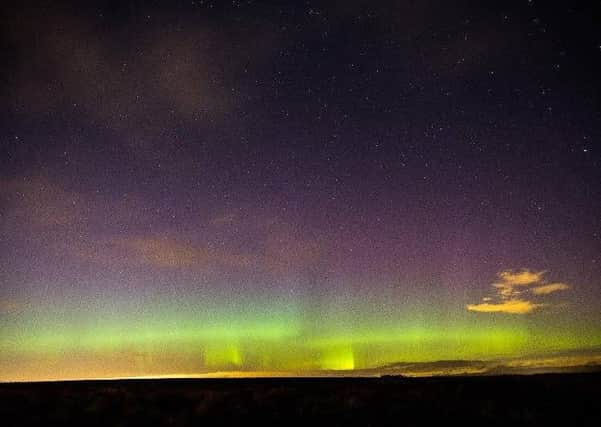Northern Lights: Aurora Borealis could be seen over Derbyshire tonight


However, there will be widespread fog tonight (Monday 2 November), which could be dense in places and might affect your chances of seeing the lights.
It is just a month since the last sighting of the aurora borealis here in the UK but the return of a large coronal hole to the Earth facing side of the Sun means our chances of seeing the Lights have again increased.
What are these phenomena?
Advertisement
Hide AdAdvertisement
Hide AdFirstly, the Sun goes through an 11 year solar cycle, from solar minimum, through solar maximum and back to solar minimum. We are now in the declining phase of the solar cycle following the solar max which occurred in early 2014. During the current phase of the solar cycle coronal holes that begin the cycle in the Sun’s ‘polar’ regions have now migrated towards the Sun’s equator, meaning they are on a similar line of latitude to the Earth (i.e. facing the planet rather than directed north and south out of the solar system). These coronal holes give rise to high speed solar wind streams that buffet the Earth, disturbing the Earth’s magnetic field.
In other parts of the solar cycle these disturbances are largely as a result of coronal mass ejections, which can give larger magnitude disturbances than these high speed streams.
Secondly the season of the year has an influence. The science behind this is not fully understood, but the two equinoctial periods in spring and autumn tend to produce an increase in aurora compared with winter and summer.
What does this mean for the UK?
We are now in a period, lasting a few weeks, where these two factors are working together to increase the chances of geomagnetic disturbances, which in turn bring with them the aurora. The strength of the disturbance directly relates to how far south the aurora is visible (or how far north if you are in the southern hemisphere), and of course you need clear skies to see it.
Advertisement
Hide AdAdvertisement
Hide AdKeep an eye on our space weather forecasts and if there’s a chance of seeing the aurora in the UK we’ll let you know.
The Met Office works closely with the British Geological Survey to forecast these geomagnetic events and the BGS website provides ‘Tips on viewing the Aurora.’